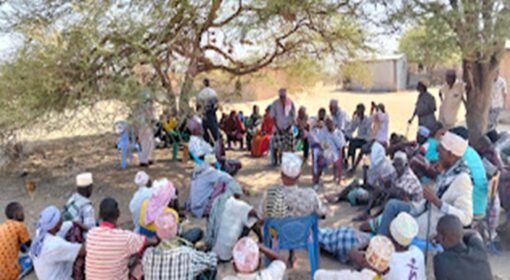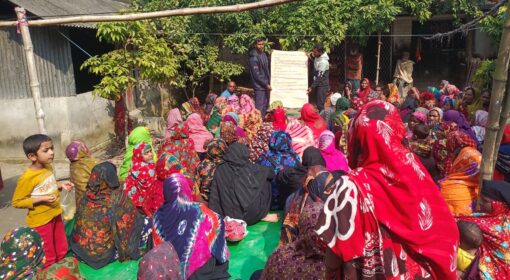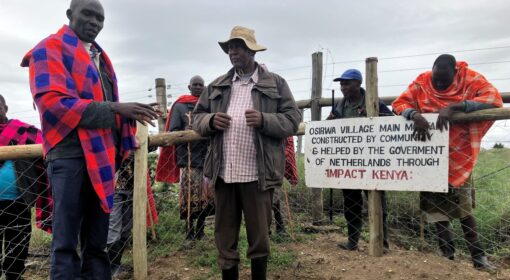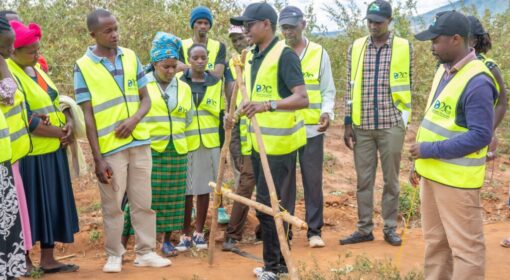Sandra Cats & Femke van Woesik
This blog is part of a dossier on locally-led adaptation, featuring insights and lessons from the Reversing the Flow (RtF) program. RtF empowers communities in Bangladesh, Burkina Faso, Ethiopia, Kenya, and Sudan to build climate resilience through direct funding and a community-driven, landscape approach.
In development work, language is never just words. It reflects intent, shapes relationships, and signals who holds power, who decides, and who is expected to follow. If we are serious about Locally Led Adaptation, we need to pay attention not only to what we do, but also to how we speak. If we are serious about Locally Led Adaptation, we need to pay attention to the words we use. What we say (and how we say it) can either reinforce existing hierarchies or help shift power.
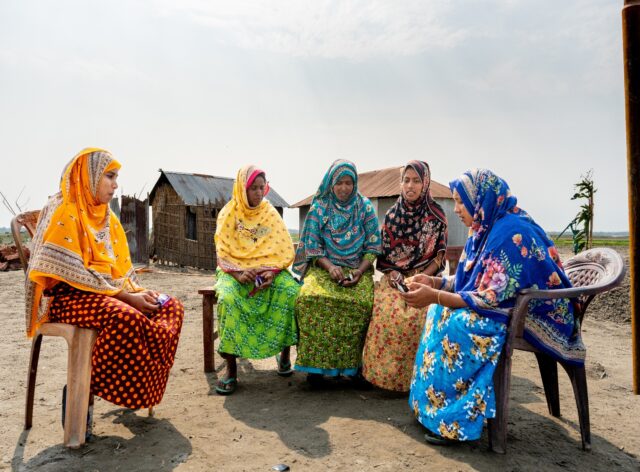
Step one: clarity of language
Too often, technical jargon, project management terms, and donor-driven language dominate the conversation. Words like stakeholders, climate finance, or even resilience can mean very different things depending on who is speaking. Communities also use their own shorthand, but that doesn’t always make communication clearer.
When someone says, “Let’s talk about budget,” do they mean donor finance reports, or how a household plans its spending? When we mention “indicators,” do people think of logframes, or of signs they themselves track, like when the rains arrive or which crops are thriving?
Meaningful communication means checking assumptions, asking “What does this word mean to you?”, and meeting people where they are. This is the first step toward speaking locally: making sure language connects rather than distances.
Step two: intent behind language
But clarity alone is not enough. Speaking locally led is not just about words: it is about the intent those words carry.
Zahid from the NGO Uttaran gave a telling example: Field staff often tell communities, “We want to organize a meeting about this thing called baseline.” It may sound harmless, but that ‘we’ signals who holds the agenda and who is being asked to catch up. What if, instead, we said: “There’s this thing called baseline. It’s a way of looking at what’s going on now and how things might change. Would you be interested in sitting together to see if this could be useful for you?”
The difference is not cosmetic. By shifting from instruction to invitation, the intent shifts too: from control to trust, from delivering a project to opening a conversation. Communities are no longer told what to do, but asked what matters to them and whether they want to engage, on their own terms.
Step three: language that reflects leadership
At this deeper level, language is tied to a fundamentally different way of engaging. Small shifts in words and intent reveal who is assumed to lead, who decides, and who takes responsibility.
The table below highlights how these shifts in language and intent can support a broader shift in leadership. They are not only about semantics, but about a principal difference in how engagement is understood: moving from participation, where communities join processes defined by others, to ownership, where communities shape, lead, and drive the process themselves.
Table 1 – Shifts from participation to local ownership and leadership in development practice.
| Not Locally Led | Locally Led |
| Participating –Communities are invited to join a process already defined by others; their role is limited to contributing to pre-set activities | Ownership – Communities lead and define the agenda; they are responsible for outcomes and are trusted to manage the process. |
| Output directed – Success is measured by tangible, short-term deliverables | Decision making – Communities decide which outcomes matter, how to achieve them, and what success looks like. Process is open-ended. |
| Project approach – Activities are defined as projects, often designed externally, with fixed goals and timelines. Little integration into broader systems. | Implementing – Communities lead implementation based on their own priorities, integrating it into ongoing local systems and practices. |
| Following – Communities are expected to follow instructions or conform to external plans, tools, or procedures. | Empowerment – Communities gain skills, confidence, and influence to make decisions and take initiative in shaping their future. |
| Top-down system – Decisions are made by institutions, experts, or donors and passed down to communities for execution. | Bottom-up system – Decisions are made at community level, based on lived experience, and communicated upward to influence policy and programming. |
| Reactive – Response happens only after a problem arises; no long-term planning or anticipation of community needs. | Proactive – Communities plan ahead, define their priorities, and anticipate future challenges and opportunities. |
| Predefined outcomes – Activities are tied to strict indicators set by donors or implementers before community input. | Community defined outcomes (later in process) – Communities determine what outcomes are important as part of the process, allowing flexibility and adaptation. |
| Time-bound / output-bound – Tied to funding cycles or project timelines; pressure to show quick results, even if unsustainable. | Take time / process-bound – Value is placed on relationships, learning, and gradual change, even if it takes longer to show results. |
| Traditional development – Based on older models of aid delivery, often linear, technocratic, and externally managed. | Future innovative approach – Embraces complexity, innovation, and long-term transformation through local leadership and experimentation. |
| Project money only – Funds are limited to project-specific activities and short-term goals; little room for flexibility. | Leverage finance – Communities are supported to unlock and blend different resources, especially public funds, for sustained action. |
| Project focus – Narrow and predefined scope, typically limited to a sector, output, or small target group. | Landscape / stakeholder approach – Integrated across sectors and actors, working at the landscape level with many stakeholders involved. |
| Risk avoiding – Prioritizes control, reporting, and predictability; avoids uncertainty or flexible adaptation. | Trust – Build relationships, openness, and confidence in communities to manage risk and learn through doing. |
Speaking locally led is not about finding the perfect vocabulary. It is about intent. Clear language helps us understand one another. But language combined with intent can shift who leads and who follows, who decides and who listens. It can turn participation into ownership, projects into processes, and compliance into trust.
